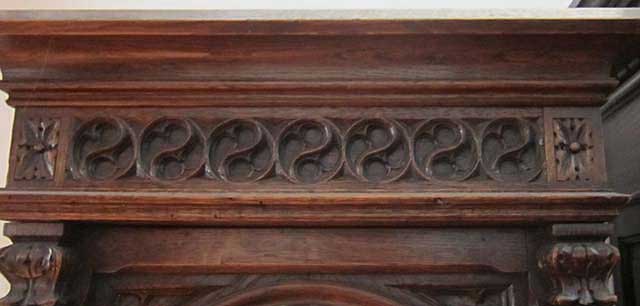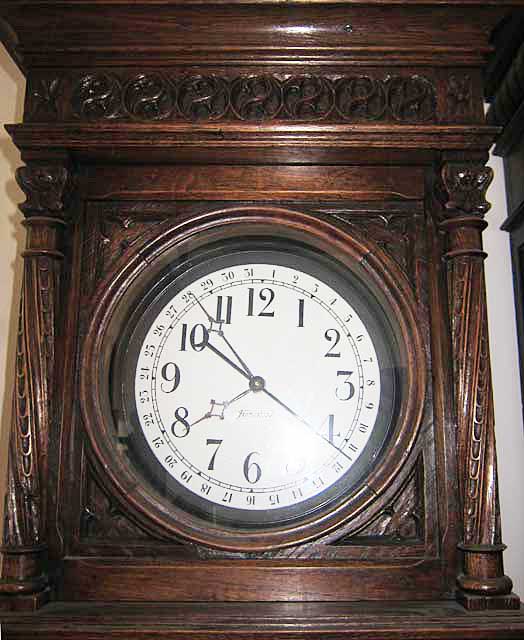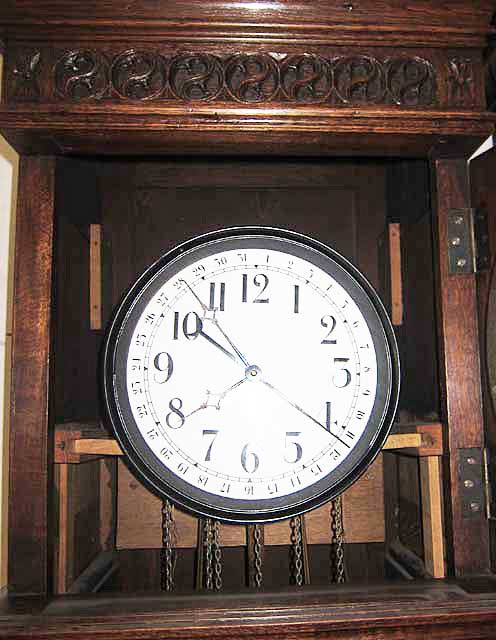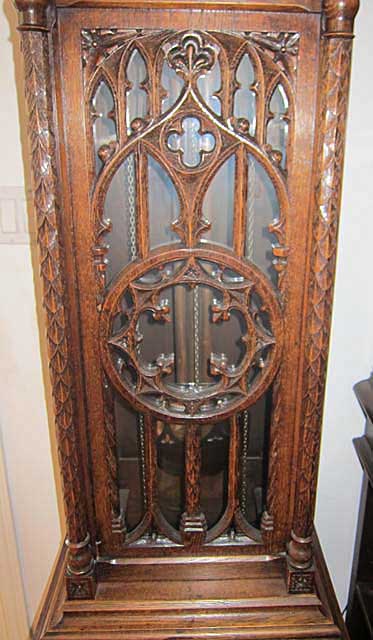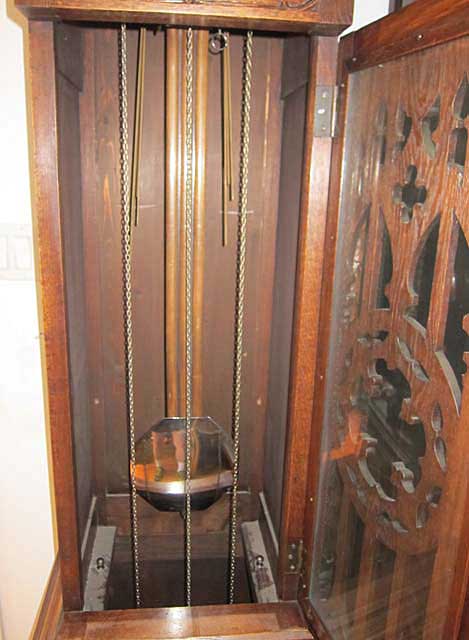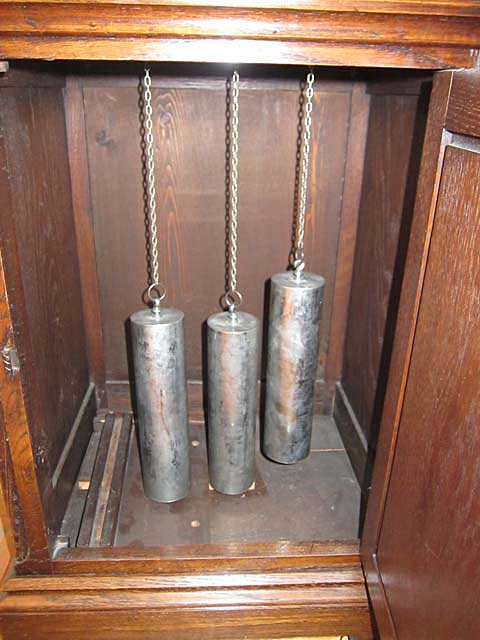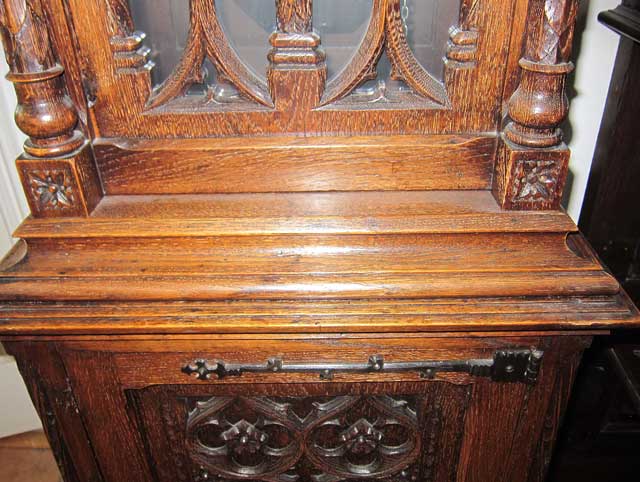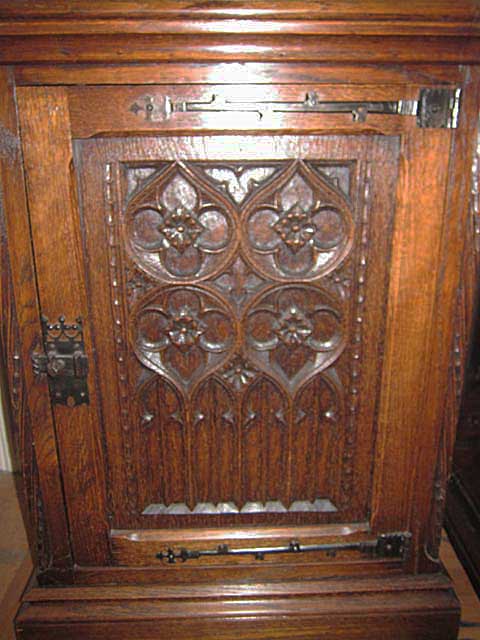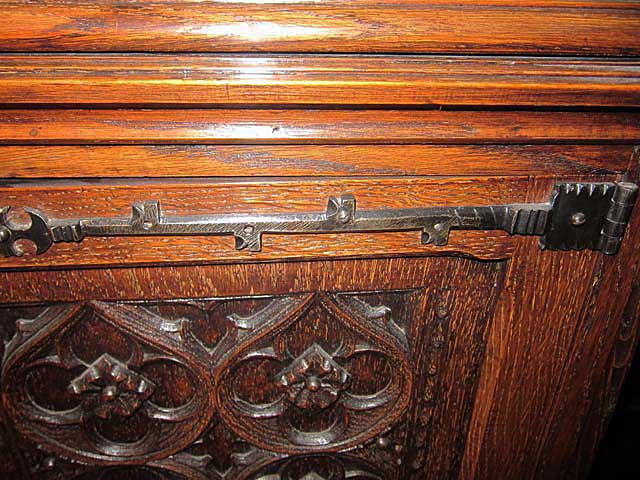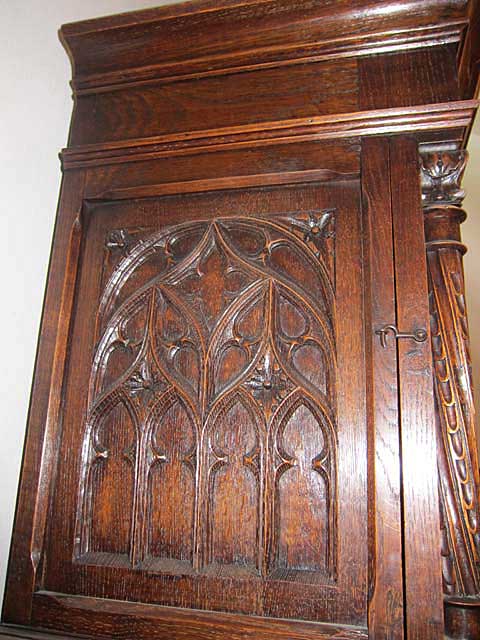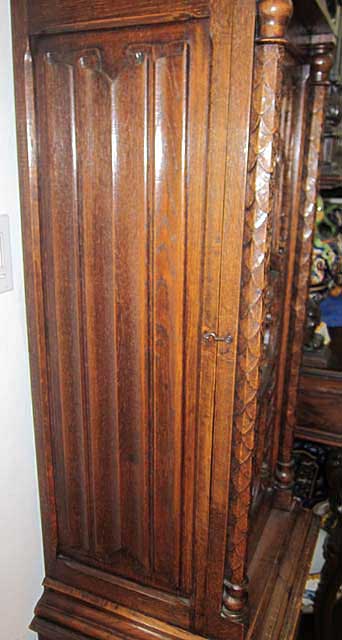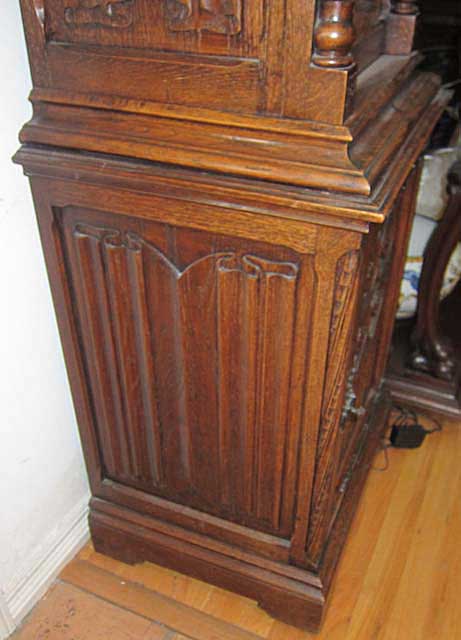
It is unusual to find a long-case or "grandfather" clock that not only is in the Gothic style but also functions as a clock and fills a room with the music of its chimes. Such clocks evoke the bell towers on either side of the west entrance of Gothic cathedrals such as Notre Dame de Paris.
The clock's case consists of three main parts: the top portion enclosing the clock face; the middle portion containing the mechanism including the chimes; and the bottom portion housing the clock's weights.
With the perfectly round clock face as the focus, the top portion reminds us of the circular spaces at either end of the transept of a Gothic cathedral where huge rose windows were installed. Not only did they assure that light would penetrate into the building but that kaleidoscopic colors would shine down onto the crucial intersection of central aisle and transept.
The front of this uppermost section of the cabinet is framed on either side by columns carved in the distinctive diagonal style mimicking the massive support columns of Gothic cathedrals. Forming a horizontal row above the clock face are seven circular Gothic figures, each of which is filled with two curved and elongated soufflet shapes that are the mirror image of one another — a sort of yin and yang of Gothic style.
The mid-section of the clock is the tallest and the most replete when it comes to Gothic elements reminding us of cathedral architecture. Unlike other Gothic clocks we have seen, the mid-section of this one uses open tracery or fenestragefilled with glass to prevent dust entering the clock-works.
The main focus is an ogee (ogive or "S" shaped) arch whose topmost point is a stylized fleur-de-lys, both characteristics of the so-called flamboyant Gothic style popular in the 16th century at a time when Renaissance style was encroaching atop a wave of influential Italian artists imported to work at royal courts in France. Within this tall ogee arch are two smaller arches, each subdivided, and separated at the top by a quatrefoil.
The main focus of the mid-section is a circular figure mimicking a rose window, subdivided into eight using connectors to a circle within the outer circle. Within the inner circle, four crockets of tiny fleur-de-lys figures. Emphasizing the tall, perpendicular nature of this section are the columns at the outer edges of the front. The columns are beautifully carved in an overlapping pattern popular in Gothic architecture and ideal for the colored pigments often applied to columns in cathedrals in order to accentuate the design and please the eye.
The lowest section of the clock is a storage cabinet where the weights reside. It evokes a medieval armoire with a magnificently carved door, iron hinges and a latching mechanism. With four lancet arches forming the base of the carved door panel, atop them are four quatrefoils with floral motifs at the center.
Unlike many Gothic pieces, including armoires, this clock case includes elaborate Gothic carving on its sides. The middle and lower sections make use of linen-fold panels, a staple of Gothic furniture design. The top section offers an intricate design of lancet arches, echoing those on the door of the lower-most panel, above which an ogee arch is framed by a rounded arch. Six mouchettes or elliptical (extended) quatrefoils populate the spaces within these upper arches, providing a wealth of Gothic tracery.
For information about the clock's mechanism, please contact us.
Overall, this tall clock is a celebration of Gothic cathedral architecture translated into oak for inclusion in a modern home or business. With its marking of the hours it acts as a reminder of the importance to medieval cities of Gothic cathedral towers whose bells marked the hours for nearby inhabitants before wristwatches and smart phones came along.
Reference
Ader-Tajan, Collection Bruno Perrier Haute Epoque (Catalog for Sale at Auction on April 6, 1992 at the Hôtel Drouot, Paris); Boccador, Jacqueline, Le Mobilier Français du Moyen Age à la Renaissance (Editions d'Art Monelle Hayot, Saint-Just-en-Chaussée, 1988); Thirion, Jacques, Le Mobilier du Moyen Age et de la Renaissance en France (Editions Faton, Dijon, 1998); Viollet-le-Duc, Eugène, Le Mobilier Médiéval (Georges Bernage, editor) (Editions Heimdal, 2003).
Uses
This clock would be ideal in an entryway (especially with an atrium) so its chimes can reverberate far and wide. Serving to complement it and affirm the Gothic elements of its style would be pairs of oak armchairs such as 5188 or 4118.
